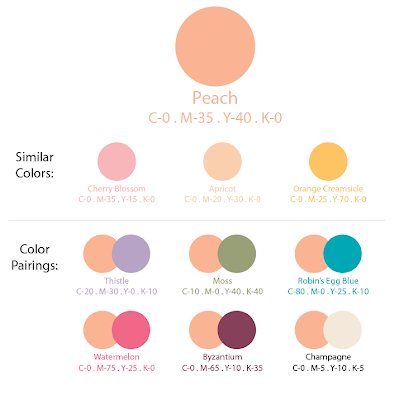Unveiling the Secret: The Alchemy of Peach Color
Imagine biting into a perfectly ripe peach, its skin a symphony of soft orange and blushing pink. It's a color that evokes warmth, joy, and the sweetness of summer. But have you ever stopped to consider what actually makes a peach, well, peach colored?
The answer, like most things in nature, is a beautiful blend of science and art. It's about the way light interacts with pigments, the way our eyes perceive color, and the subtle variations that create the entire spectrum of peachy hues we know and love.
This isn't just an exploration of a fruit's outward appearance, though. Understanding the creation of peach color can unlock a deeper appreciation for the complexities of color itself. It's a journey into the heart of light, perception, and the ways we interact with the vibrant world around us.
So, let's embark on this colorful adventure together. We'll delve into the pigments that lay the groundwork for peach, explore the role of light in bringing those pigments to life, and uncover the secrets behind the different shades and variations of this captivating color.
Whether you're an artist seeking to capture the perfect peach blossom on canvas, a designer looking for just the right shade to evoke tranquility, or simply someone who appreciates the subtle wonders of the natural world, this journey promises to be enlightening – and perhaps even a little bit peachy.
The story of peach color begins with the building blocks of color itself: pigments. These are the substances that absorb and reflect different wavelengths of light, ultimately dictating the colors we perceive.
In the case of peach, the primary pigments at play are carotenoids, a family of organic pigments responsible for the vibrant hues of many fruits and vegetables. Carotenoids primarily reflect longer wavelengths of light, which we see as yellow, orange, and red.
However, the exact shade of peach depends on the specific combination and concentration of these pigments. Factors like the variety of peach, its ripeness, and even the amount of sunlight it receives can influence the final color. This explains why we encounter a delightful spectrum of peach hues, from delicate pastel pinks to vibrant coral tones.
But pigments alone don't tell the whole story. Light plays a crucial role in how we perceive peach color. When light hits the surface of a peach, some wavelengths are absorbed by the pigments, while others are reflected. Our eyes then receive these reflected wavelengths and our brain interprets them as color.
This means that the same peach can appear slightly different depending on the lighting conditions. Natural sunlight tends to bring out the warmth and vibrancy of peach, while artificial light might cast a cooler, more subdued tone.
Understanding the interplay of pigments and light is essential for anyone seeking to recreate or work with peach color. Artists, for instance, often use a combination of pigments to achieve the desired shade and depth, taking into account how light will interact with their chosen medium. Designers, too, consider lighting conditions when selecting peach hues for interiors or digital interfaces, ensuring the final result evokes the intended mood and feel.
Peach color, far from being a simple hue, is a testament to the complex and fascinating world of color creation. It's a reminder that even the most seemingly straightforward colors are the result of a delicate dance between pigments, light, and our own perception.
So, the next time you encounter a peach, take a moment to appreciate the intricate beauty of its color. Recognize the interplay of pigments, the role of light, and the remarkable way our brains translate those factors into the delightful experience of seeing peach. It's a subtle reminder of the wonders hidden in plain sight, waiting to be discovered through curious eyes and a touch of color appreciation.
The underexplored hues of pineapple express lyrics
Unveiling the secrets of egyptian style eye makeup
Unlocking the magic your guide to celtic flute sheet music














